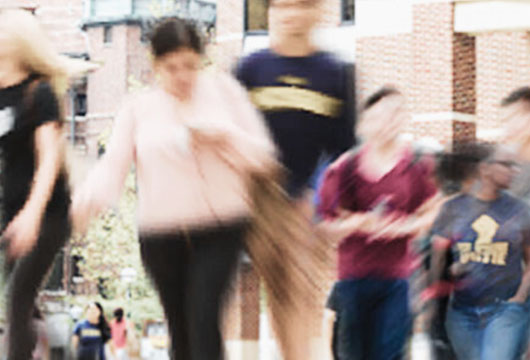 “Engaged learning” is a common term at the University of Michigan and a growing movement nationally. What does it mean? U-M’s working definition conceives of engaged learning as providing students with opportunities for practice in unscripted, authentic settings, where stakeholders (including the students themselves) are invested in the outcome. This pairs nicely with Grant Wiggins’s concept of “authentic assessment,” whereby students closely practice and demonstrate the type of work they will be doing after graduation: it is public, involves collaboration, and engages students in representative challenges of a field or subject, which are often ill-structured -- rather than having “right or wrong” answers. A more thorough exploration of engaged learning at Michigan can be found in a forthcoming series of Occasional Papers (more on these below).
“Engaged learning” is a common term at the University of Michigan and a growing movement nationally. What does it mean? U-M’s working definition conceives of engaged learning as providing students with opportunities for practice in unscripted, authentic settings, where stakeholders (including the students themselves) are invested in the outcome. This pairs nicely with Grant Wiggins’s concept of “authentic assessment,” whereby students closely practice and demonstrate the type of work they will be doing after graduation: it is public, involves collaboration, and engages students in representative challenges of a field or subject, which are often ill-structured -- rather than having “right or wrong” answers. A more thorough exploration of engaged learning at Michigan can be found in a forthcoming series of Occasional Papers (more on these below).
Here are a few of the many ways that students already experience engaged learning at U-M:
-
School of Information students in Citizen Interaction Design craft new information and community systems for the government and nonprofits of Jackson, Michigan.
-
M-Write II challenges students in large STEM courses with real-world writing tasks, like writing a memo to a cell phone manufacturer explaining why oxidation-reduction chemistry is key to building a better cell phone battery.
-
At the curricular level, the Stamps School of Art and Design’s social engagement requirement ensures that all students pursue a collaborative project with social impact.
With these actual U-M examples in mind (along with other opportunities like authentic research or study abroad), what are the benefits to students of participating in engaged learning activities? The 2014 Provost Task Teams on Engaged Learning and Digital Instruction identified five key engaged learning outcomes:
-
Intercultural Engagement
-
Creativity
-
Self-Agency, and the Ability to Innovate and Take Risks
-
Communication, Collaboration and Teamwork
-
Civic/Social Responsibility and Ethical Reasoning
Five Occasional Papers, one focused on each goal, will be distributed in Spring 2016 to help faculty and staff foster student learning around these goals. Grounded in a series of conversations with U-M faculty, staff and students, each paper situates its learning goal in the literature, offers U-M exemplars, and suggests specific measures that can be used for assessment. The first paper on intercultural engagement has been mailed to all faculty, and a digital version is also available.
U-M's working definition of engaged learning comes from a series of discussions from 2014-2016 that included U-M faculty, students and staff. In collaboration with the Office of the Vice Provost for Global and Engaged Education, CRLT has been hosting additional conversations faculty, staff and students to further define engaged learning outcomes that we seek to promote and the learning experiences that will best help achieve them. These conversations have informed the forthcoming TLTC/CRLT Occasional Papers.
For questions about these papers or to talk about assessment of engaged learning goals and practices, please contact [email protected]. Faculty and staff on the Ann Arbor campus who are interested in developing learning communities around these goals and practices may also be interested in TLTC-NET, a small grant that supports their development (Deadline: June 30, 2016).
Photo credit: Abigail Stewart (Psychology and Women's Studies) and Sueann Caulfield (History), TLTC Quick Wins/Discovery Grant: "Expanding the Global Feminisms Archive"
- Log in to post comments
- 126 views






